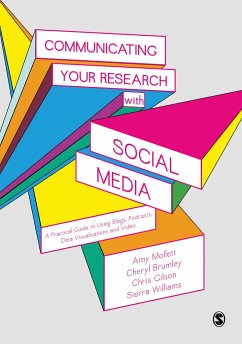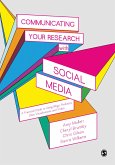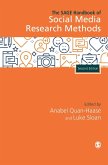This dynamic, engaging guide empowers you to go beyond bar charts and jargon-filled journal articles to bring your research online and present it in a way that highlights and maximises its relevance through social media.
Drawing upon a wealth of timely, real-world examples, the authors present a framework for fully incorporating social media within each step of the research process. From visualising available data to tailoring social media to meet your needs, this book explores proactive ways to share cutting edge research. A complete how to for communicating research through blogs, podcasts, data visualisations, and video, it teaches you how to use social media to:
create and share images, audio, and video in ways that positively impacts your research connect and collaborate with other researchers measure and quantify research communication efforts for funders provide research evidence in innovative digital formats reach wider, more engaged audiences in academia and beyond
Through practical advice and actionable strategies, this book shows how to achieve and sustain your research impact through social media.
Drawing upon a wealth of timely, real-world examples, the authors present a framework for fully incorporating social media within each step of the research process. From visualising available data to tailoring social media to meet your needs, this book explores proactive ways to share cutting edge research. A complete how to for communicating research through blogs, podcasts, data visualisations, and video, it teaches you how to use social media to:
create and share images, audio, and video in ways that positively impacts your research connect and collaborate with other researchers measure and quantify research communication efforts for funders provide research evidence in innovative digital formats reach wider, more engaged audiences in academia and beyond
Through practical advice and actionable strategies, this book shows how to achieve and sustain your research impact through social media.
Written by experts on communicating research to publics, this book is a steadfast guide to the fast-paced world of social media. It usefully positions the use of social media in the broader contexts of its history as well as the research lifecycle, and the practical chapters are brilliantly illustrated with informative and entertaining examples. From the novice social media dabbler to the platform veteran who wishes to expand her repertoire, academics and other knowledge workers will benefit from this sharply-written book.
Ella McPherson 20161209
Ella McPherson 20161209








